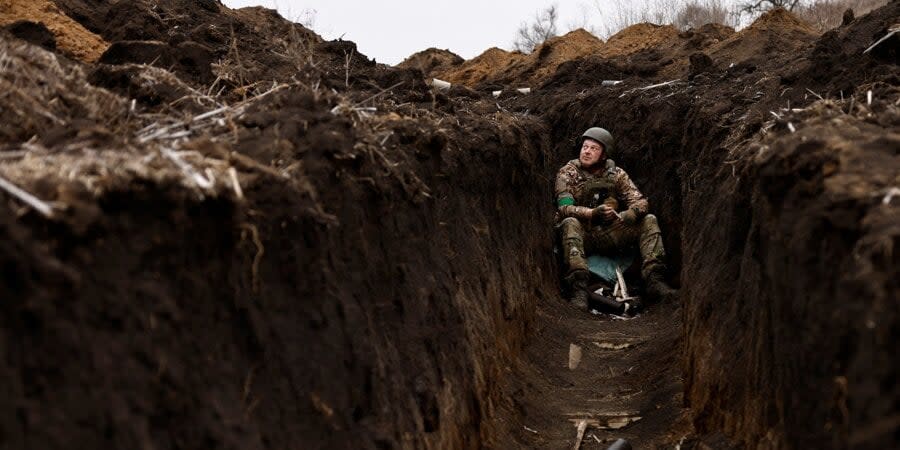ISW reveals China’s vital role in propping up Russia’s military industry

Western mass media has confirmed that Chinese companies have been selling military equipment and dual-purpose equipment to Russia.
Notably, Chinese companies have sent equipment including 1,000 assault rifles, 12 shipments of drone parts, and over 12 tons of body armor to unspecified Russian actors between June and December 2022, Politico said, citing data provided by the ImportGenius customs data aggregator.
While these sales appear small in scale, concern largely commercial equipment, and — in all but one confirmed case — do not include companies with ties to the Chinese government, ISW analysts note that such Chinese supplies are significant because they can reduce the burden on Russia's military-industrial complex and help Russia circumvent Western attempts to limit Russia's access to microchips.
ISW “has not observed routine Russian small arms shortages, and Russia’s defense industrial base (DIB) appears capable of producing sufficient quantities of assault rifles.”
Read also: ISW says fighting for Bakhmut exhausting Russians, preparing ground for Ukrainian counter-offensive
“The import of domestically available equipment from China likely enables the Russian DIB to transfer resources — most critically the limited number of skilled Russian defense plant workers — from the production of such goods to the production of military equipment for which Russia has a dire need.”
Russia’s FSB Security Service appears to be trying to control Russia's military-industrial complex (MIC) using methods similar to those of the KGB from the Soviet era.
Ukrainian experts found FSB markings on many Russian weapons that Ukrainian troops have destroyed or captured on the battlefield, said Spokesperson for the Ukrainian General Staff's Ukrainian Center for the Research of Trophy and Prospective Weapons and Military Equipment Andriy Rudyk on March 16.
Rudyk noted that these markings appear not only on equipment such as T-90M tanks, but also on weapons’ microcircuits, suggesting that the FSB conducted an equipment inspection of those weapons and components. He concluded that the FSB does not trust Russian military leadership and is conducting inspections of Russian equipment accordingly.
FSB markings on Russian equipment and weapons components, if confirmed, would have broader implications for the relationship between the FSB, the Russian DIB, and the broader Russian military apparatus.
ISW also mentioned Syrian President Bashar al-Assad, who staged an “interview” with the Russian propaganda news agency RIA Novosti to boost Russia’s information operations. In response to a question about the deployment of hypersonic missiles, Assad said that “Russian military bases in Syria should receive the 'most advanced weapons' to effectively deter threats.”
This supports the idea that Russia is following through on its threat to deploy hypersonic weapons, likely of the Kinzhal variety, to Syria. This follows a longstanding Russian operation to strengthen Assad and increase pressure on Turkey, who continues to consider Finland and Sweden’s accession to NATO.
Assad also notably recognized the Russian-occupied territories of Ukraine as “part of Russia.”
In his speech at the Congress of the Russian Union of Industrialists and Entrepreneurs in Moscow on March 16, Russian dictator Vladmir Putin tried to convince the Russian public that the war in Ukraine would not have significant long-term and economic consequences.
Read also: Putin’s latest address failed to articulate specific goals for war in Ukraine, says ISW
This could signal an effort from the Kremlin to prepare the Russian population for a long war.
Despite Putin’s claims of a strong and stable Russian economy, Russia’s economic issues are evident, particularly in the military industry’s inability to fulfill the requirements of the Russian army in the ongoing war in Ukraine.
Projected budget deficits in Russia indicate additional problems.
The Kremlin’s attempt to reassure the public that the military-related production won’t negatively impact the broader economy is likely a strategy to mobilize Russia’s military-industrial complex.
Read also: Air defense systems in Moscow part of information operations, says ISW
Key takeaways:
• Polish President Andrzej Duda said that Poland will soon hand over four MiG-29 fighter jets to Ukraine: ISW reminds that since the Air Force of Ukraine already has these in service, they will be able to use them in counteroffensive operations if they receive them early enough.
• Russia’s decision to redeploy elements of its “peacekeeping force” from Nagorno-Karabakh to Ukraine is eroding Russia’s influence with Armenia.
• Russian forces conducted limited ground attacks northeast of Kupyansk and along the Svatove-Kreminna line.
• Russian forces continued advancing in and around Bakhmut and continued ground attacks along the Avdiivka - Donetsk City line and in Western Donetsk Oblast.
• Russian sources claimed that Ukrainian forces conducted localized assaults in Zaporizhzhya Oblast.
• Ukrainian sources reported that Russian forces increased their naval presence in the Black Sea.
Map of combat operations: the battle for Bakhmut, battles in the Donbass and Zaporizhzhya Oblast, the situation in the south and northeast of Ukraine
We’re bringing the voice of Ukraine to the world. Support us with a one-time donation, or become a Patron!
Read the original article on The New Voice of Ukraine

